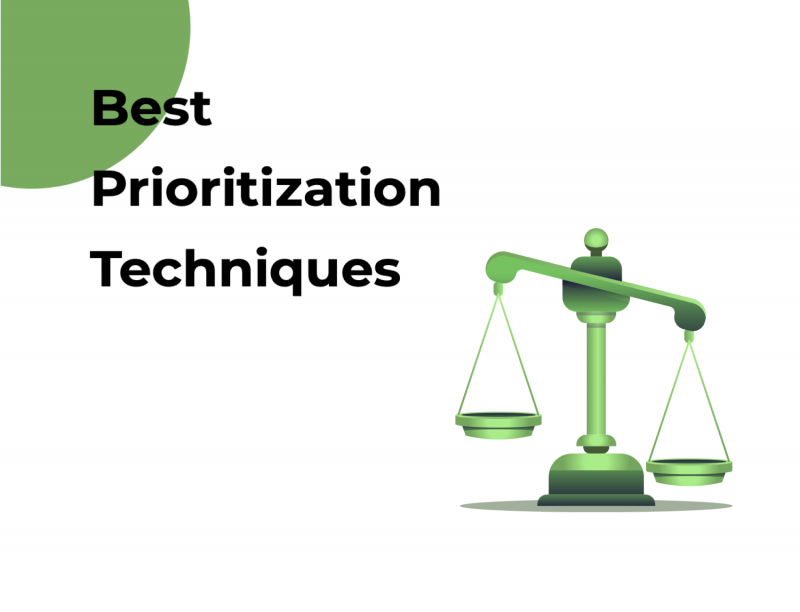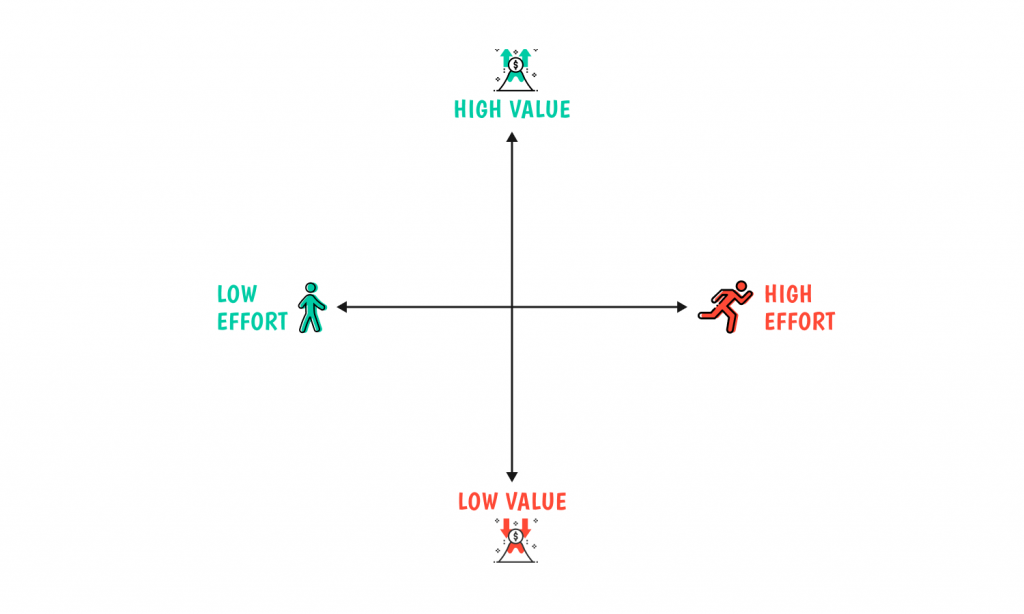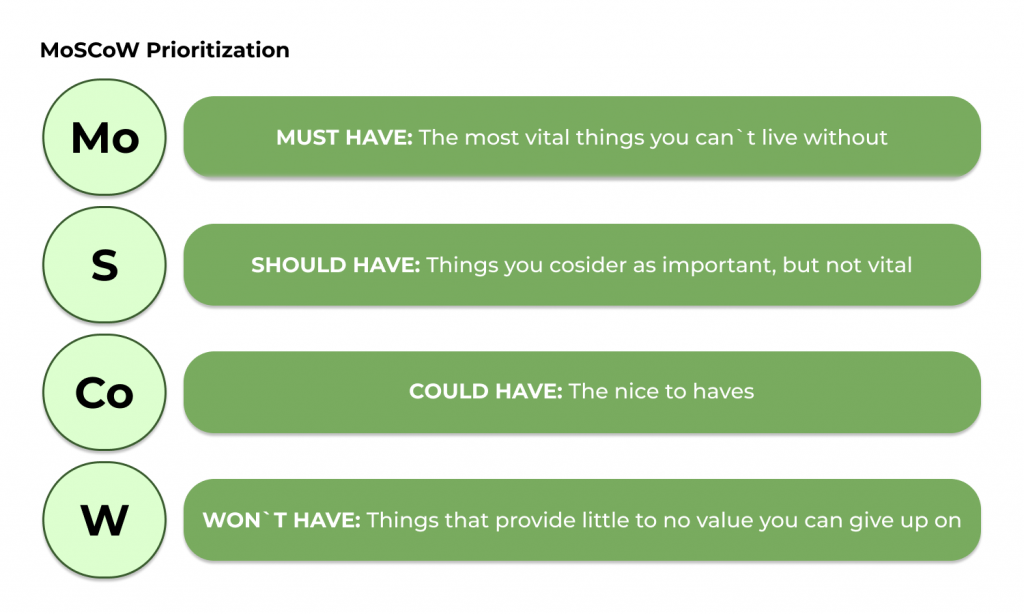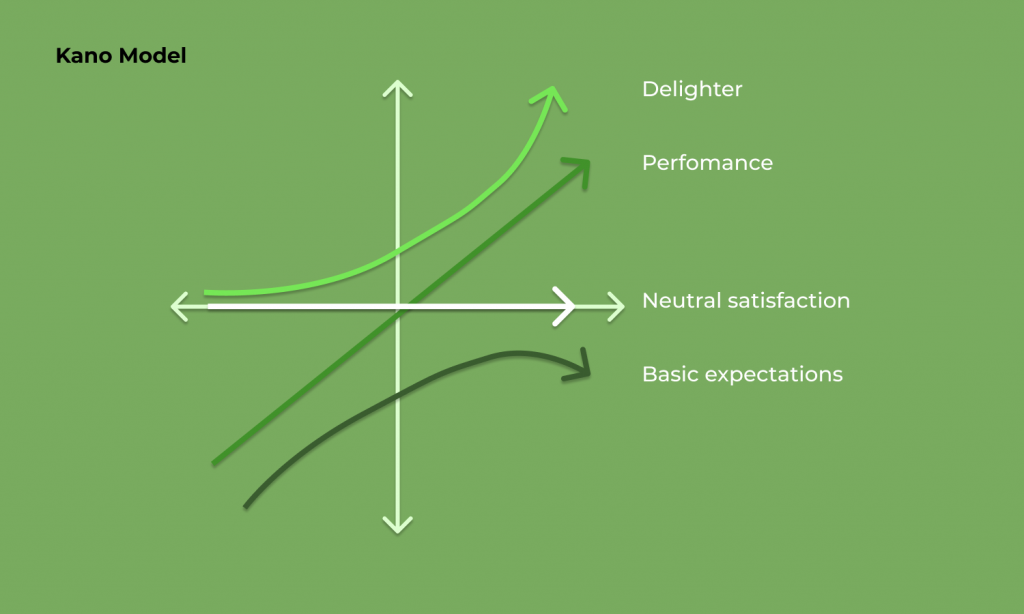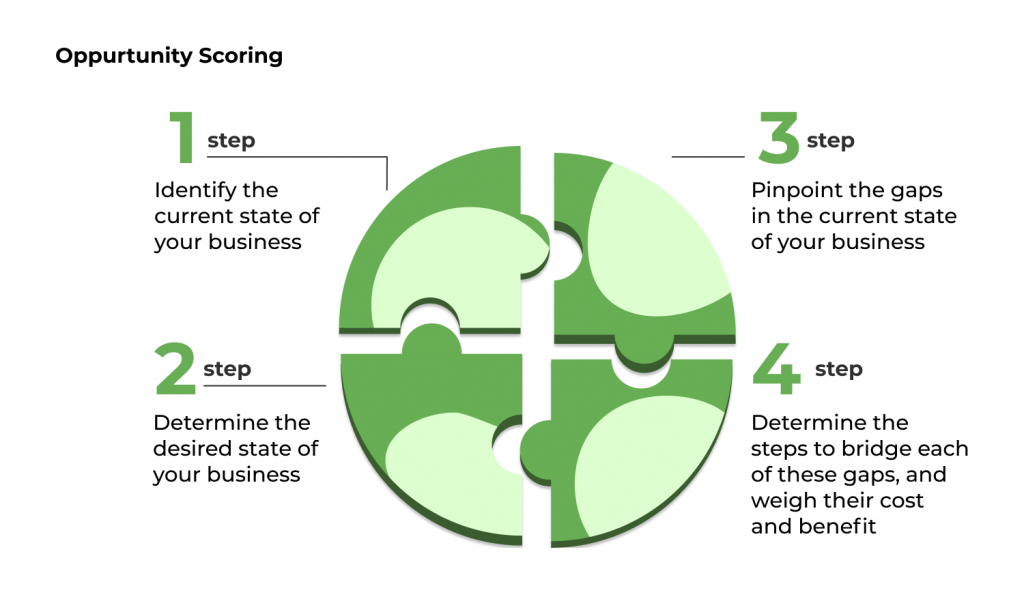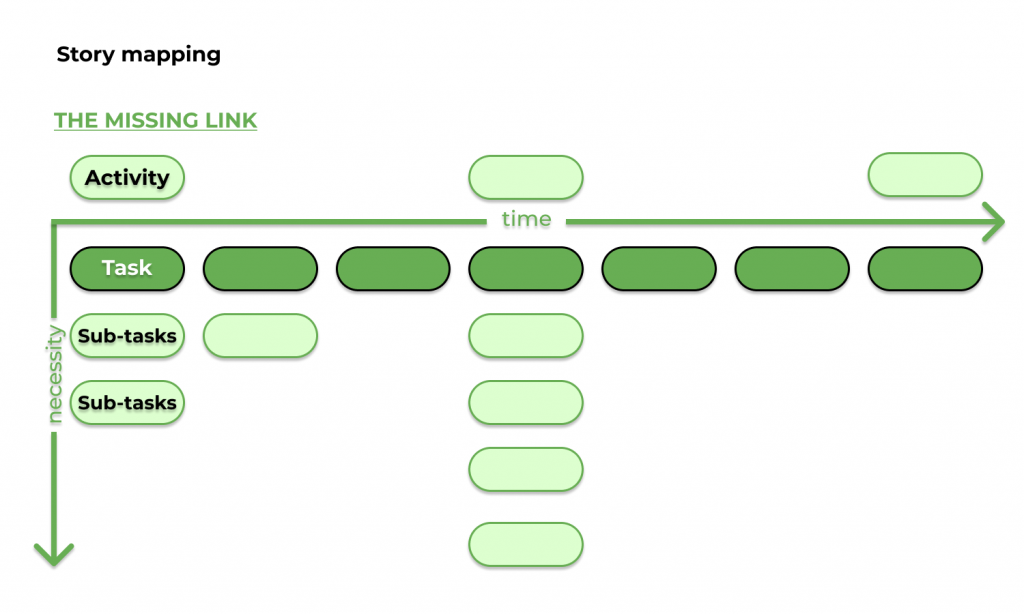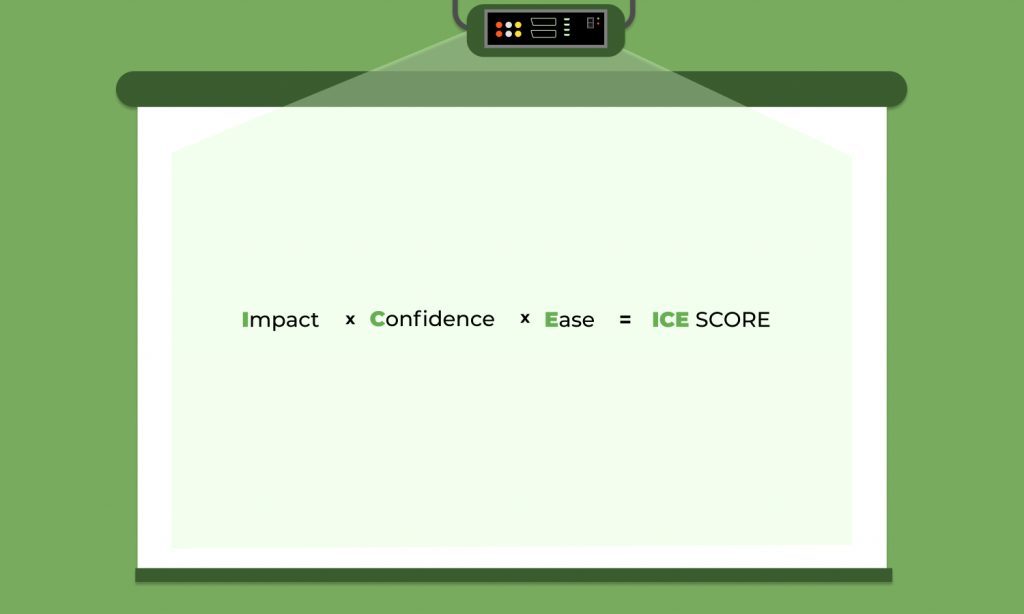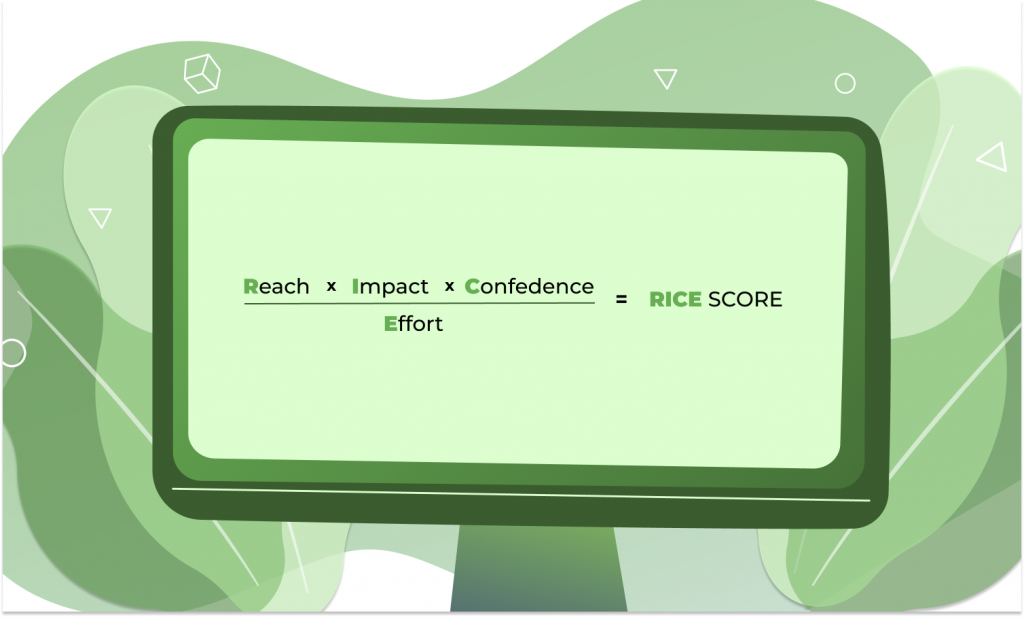Reaching the role of a leader in your company, you start facing extra responsibility and pressure in terms of various aspects. From maintaining a positive reputation to prioritizing tasks and features correctly on a daily basis.
Each of us constantly faces the need to prioritize things in different life situations. For work tasks, prioritization is a success engine that helps you quickly and efficiently cope with routine and a bunch of unclaimed tasks. All project managers know that quality prioritization is an essential tool in 2021.
The ability to set priorities may seem like a simple and accessible skill. However, for product managers and project managers with no experience, this can be a real cause of failure.
This is especially true for new project managers. Learning how to manage their time properly is often the difference between a poor performer and a high-flyer. If necessary, it is worth going on a professional course (like one of these training courses for example).
Product backlog prioritization is not only about making a stack of features in a certain order. This process contains juggling many stakeholders’ inputs and opinions. The truth is – narrowing the list of product feature requests can be the most challenging part of a product owner/product manager’s job. Luckily, there are powerful prioritization techniques that are aimed to help you deal with the different hierarchies and define urgent, important, necessary, and needless items. They will be definitely helpful if you need to determine priorities for your project tasks, objectives, requirements, and product features.
Contents
What is a Product Backlog?
A product backlog is a set of items that should be done. These items should be ranked according to feature descriptions and broken down into user stories.
The Agile backlog gathers and prioritizes the task-level details on the strategic plan set forth in a product roadmap. It should communicate what will be next on the development to-do list of the team.
The well-prioritized backlog is aimed to make release and iteration planning easier and systemize everything the team intends to spend time on. The product backlog is the responsibility of the product owner who cares about the content, availability, and priority of the backlog.
Why is it important?
- Every feature can be estimated
- It helps to plan the roadmap for the product
- Helps to re-rank the features that influence the product value
- Helps teams to rank an item and then build value
Characteristics of a backlog
There is an abbreviation that combines similar characteristics of good product backlogs. This is DEEP:
- Detailed appropriately
- Emergent
- Estimated
- Prioritized
Here we will dwell on the last point – on how to make backlog qualitatively prioritized and how you can quickly achieve this.
What is Prioritization?
Looking for the prioritization definition, you will probably stumble upon several interpretations, but they will all boil down to one thought. Prioritization means organizing things when the most important thing is done or dealt with first.
This may involve organizing a group of tasks or things that need to be completed, as well as their ranking according to different factors (for example, criticalness). Prioritization helps us to clearly define what should be focused on to accomplish more and achieve maximum productivity.
There are two common ways of defining prioritization:
- what should be done first when you have a lot of tasks to complete.
- when you prioritize throughout the day to make sure you have time for everything.
Why is prioritization important?
Setting priorities is necessary for completing everything that needs to be done. The process of prioritizing allows you to focus on tasks that are important and urgent so that you can later direct your attention to lower priority tasks.
If you ignore prioritization, you will have trouble getting things done on time and stress about how you will finish everything on your to-do list.
Everyone has many things that need to be done. Often, people track their stuff by creating to-do lists. To-do lists can be really helpful to see a birds-eye view of your needs and figure out what you need to focus on right now, work efficiently, and save time and energy. This is probably one of the most simple ways to deal with priorities.
How to Prioritize
In order to recognize what needs to be done here and now, you must go through all of your to-do’s and clarify the following moments:
- Is this a pressing priority with a deadline coming up and possible consequences if it is not finished on time?
- Is it a crucial priority, meaning that this item must be done, but without clear deadlines?
- Is this a non-obligatory priority without possible consequences?
Trying to set priorities, you should also consider where each item ranks in comparison to other items. There are many specific prioritization methods and frameworks which we will cover in this article below to help you prioritize.
What are the goals of the prioritization process?
Every person strives to accomplish as much as possible in their personal and work lives. For that reason, it is quite important to determine which goals to tackle first.
In order to prioritize how your goals and objectives should be categorized, you first have to list all of them. Define how long you would like to spend on every goal or objective, and when you would like to achieve it. Remember, you are the only one who knows your goals better than anyone.
Here are some questions that will help you to figure it out:
- Which goal do I think about the most?
- Which goal can give me the most energy?
- Is this in line with my true values?
- Which goals do not depend on other people or circumstances?
- Which goals give me a heavy sensation when I think about them?
- Which goals give me positive feelings when I think of them?
- In ten years from now, how important will the goal be to me?
- What achievements would make me feel proud of myself?
- Which goals fit best within my current life context?
Prioritization in Product/Project Management
One of the core artifacts that are used in Agile software development is a product backlog. Product teams compile it as a source of story points or tasks that must be completed in the next sprint. Before joining the backlog, each task (or any item) must be prioritized to define what looks most reasonable or delivers the most value.
Besides, the skill of managing priorities definitely assists when you deal with Scope Creep, trying to optimize and save your projects.
Top-10 Prioritization Matrices And Techniques For Any Purpose
Relying on a gut feeling often puts a project at risk. That’s why product and project managers who are typically responsible for prioritizing tasks in a backlog should constantly empower their professional skills and knowledge with the power of popular prioritization techniques and frameworks.
Here’s the list of the most common prioritization techniques and methods, that will be definitely helpful in 2021. After the short description of each method, we will give our subjective assessment of how simple or complex the method is, ranging them in stars ![]()
Prioritization Matrices
1. Eisenhower’s prioritizing matrix
Eisenhower’s matrix is a classic model in the prioritization matrices system. The matrix gets its name from a thirty-fourth American president who knew how to prioritize things well. This matrix typically consists of four squares for the following :
- Square 1 contains the fundamentally important and the most urgent tasks and issues. They should be finished as soon as possible.
- Square 2 includes a set of very important but not so urgent tasks. Based on this square, there is the main workflow for each employee with his/her current duties and planned tasks.
- Square 3 presents urgent but not very important activities. This part may look like a bunch of distractions that should be considered carefully before their direct execution.
- Square 4 involves the tasks of the lowest priority both for their urgency and importance. These activities and tasks are certain parts of some more global processes and finally have to be done, too.
Many specialists all over the world respect the Eisenhower matrix for its simplicity and utilization flexibility. It is actively used in product development, business strategy development, work planning, and other high-level management processes.
2. Value vs Effort matrix
This simple structure matrix allows product specialists to operate their tasks in a more comfortable way.
The matrix also has a classic view of four squares. Each of them defines the value of the group of tasks and the approximate amount of effort for the task execution. Here is how this prioritization matrix may look like in real life:
- Square 1 represents Quick wins. These tasks are different by their high importance for the entire workflow, they do not actually require a lot of effort.
- Square 2 represents Big Bets. These tasks are quite valuable. They can bring an organization to success, however, they often need more time and efforts to be done.
- Square 3 represents Maybes – the tasks and activities that are easy to be completed without many efforts. However, they hardly have a big importance for the business processes.
- Square 4 represents Time Sinks. Here you will find tasks with low priority with minimal effort, so it is recommended not to pay attention to these tasks during the day.
3. Value vs Risk matrix
Another interesting and easy-to-implement way of task prioritization – is the Value and Risk method. It helps specialists to divide the tasks into four categories by their value for the workflow and also realize the real risk of a particular activity. The value of each task is determined individually, but there are three different criteria for the risk scoring, as follows:
- Schedule risk means that the risk can be defined by the time the task starts.
- Cost risk means a rather high amount of the task cost that exceeds the possibilities of the business.
- Functionality risk is a lack of technological possibility to do the task.
4. The Value vs Complexity matrix
This lightweight methodology is widely used by product and project managers to evaluate features on a product roadmap. Value vs Complexity requires a balanced approach to business and tech aspects of development.
The framework is based on the Eisenhower matrix, where the features are allocated across four quadrants with two dimensions: value and complexity. According to the technique, the most value and least complexity tasks are performed first.
The product team estimates the features’ Value and the criteria are defined by the team arbitrarily. They may represent customer engagement, retention, customer acquisition potential, market demand, expected revenue, and so on.
The team estimates the total cost of the feature and represents it as a proxy for the Complexity necessary to realize it.
| Pros | Cons |
|
|
Simplicity for all the matrices: ![]()
![]()
![]()
![]()
Prioritization Techniques and Models
5. MoSCoW
One of the most popular in the project management environment and the simplest approaches for prioritizing products composes an acronym that combines four priority categories: Must, Should, Could, and Would (or Won’t).
Using the method, you can easily evaluate the relative importance of every task. MoSCoW is equally popular among both companies that adopt Agile software development practices and Waterfall-focused teams.
The technique offers to break down all story points into the following categories:
- “Must” is about mandatory items. When you abandon them, the current sprint most likely fails.
- “Should” represents the items great to have, but with not the highest priority. They do not have much impact on delivery, however, they must be implemented.
- “Could” items represent the essential small-scale improvements. They do not require considerable resources and their absence will not significantly affect the release.
- “Would” is about the items with the lowest importance. You can easily omit or rescheduled them for future releases.
| Pros | Cons |
|
|
Simplicity: ![]()
![]()
![]()
![]()
![]()
6. Kano Model
The technique is based on different levels of users’ satisfaction with a product’s features and behavior. The author of the method is the Japanese researcher Noriaki Kano who described its model in the 1980s.
There are different ways to implement the Kano model. One of the versions offers dividing user backlog items by the following criteria: Must-be, Attractive, One-Dimensional, Indifferent, and Reverse.
The technique that is based on user satisfaction, requires conducting surveys and user interviews before prioritizing.
- Must-be features – a customer considers the product functional only if these features are included.
- One-dimensional features are not “must-have” for work, but they seem extremely desirable to customers.
- Attractive features are aimed to add extra satisfaction. They are typically unexpected but nice-to-have.
- Indifferent features have the least possible impact on customers’ satisfaction and actually have no value.
- Reverse features are the most annoying. They usually have a negative effect on customer satisfaction.
| Pros | Cons |
|
|
Simplicity: ![]()
![]()
![]()
7. Opportunity Scoring
The Opportunity scoring model (or opportunity analysis) is the prioritization technique that comes from Anthony Ulwick’s Outcome-Driven Innovation concept. According to the famous author’s theory, customers buy products and services to get certain jobs done.
Their feedback is still important, even although they are not very good at coming up with solutions to their challenges. The team will use their feedback to come up with the desired outcomes.
The Opportunity scoring approach uses two graphs to measure and rank opportunities: Satisfaction and Importance.
After completing the list of ideal outcomes, you will be able to survey your clients, asking them the questions:
- How important is a particular feature?
- How satisfied are they with the solution?
Then you have to plot their answers on the chart, which will give you the opportunity to see the features that matter the most to the clients but currently have low satisfaction scores within your product.
These items will be prioritized for your next sprint.
| Pros | Cons |
|
|
Simplicity: ![]()
![]()
![]()
8. Story Mapping
The Story Mapping technique has been first communicated in the article by Jeff Patton. According to this prioritization methodology, a product backlog is not enough to prioritize the work. Jeff Patton thinks that in order to succeed, you need a more detailed structure. He proposes the following mechanics:
- The horizontal axis where the sequence of use is visualized. The tasks are placed in the sequence in which they are performed by the client.
- The vertical axis demonstrates criticality. The tasks are placed relative to how important they are from top to bottom. There are also equally important tasks that may be visualized at the same height.
Groups of related stories are grouped as activities.
Story Mapping allows teams, partners, and clients to share a common understanding of what is happening. The technique defines how to gradually release product iterations.
| Pros | Cons |
|
|
Simplicity: ![]()
![]()
![]()
9. ICE Prioritization
The ICE score prioritization model is the concept described by Sean Ellis. To apply ICE scoring, you have to calculate the score per idea, according to the formula:
Impact*Confidence*Ease = ICE Score
where:
- Impact shows how much a particular idea positively affects the key metric you’re trying to improve.
- Confidence demonstrates how sure you are about the Impact. It also reflects the ease of implementation in some way.
- Ease shows the easiness of implementation.
According to the method, you rate the values on a relative scale of 1–10 so as not to over-weigh any of them. You can choose what 1–10 means, as long the rating stays consistent.
| Pros | Cons |
|
|
Simplicity: ![]()
![]()
10. RICE Prioritization
The RICE technique seems quite a time-consuming but balanced prioritization approach for mature products. This rate-scoring method involves calculations that’s why it can not be considered as a simple one. Besides, it is not applicable in every prioritization case.
RICE allows effective teams to take a detailed look at the product from different sides.
The acronym involves: Reach, Impact, Confidence, and Effort – the factors to estimate every feature separately.
- Reach demonstrates the number of people able to use it in a particular time period. This parameter is assessed with Daily or Monthly Active Users metrics.
- Impact reflects the feature contribution to the overall product promotion.
- Confidence comes to the rescue when If you think a project could have a huge impact but do not have data to back it up. It helps you to estimate how sure you are about the given feature benefit.
- Effort demonstrates the time taken by the product and engineering teams. Depending on needs, it is estimated as a number of “person-months”, weeks or hours.
You need to take the proposed features, rank each of them using Reach, Impact, Confidence, and Effort criteria, and use the scores to decide which features will be cut. The formula looks like:
RICE= Reach*Impact*Confidence/Effort
The bigger the rate is, the higher the priority.
| Pros | Cons |
|
|
Simplicity: ![]()
By applying some of these prioritization methodologies, companies learn that setting and changing priorities is an essential fact of organizational life. If implemented effectively, prioritization frameworks fundamentally change companies, but only if top management deals with tough choices.
Conclusion
A good idea is to bring and apply them all together. Be sure, if your backlog items are turning into a line, then you’ve got a green light to prioritize.
Prioritization is not a complex science, it’s just your helper to get things done. With some experience, you will find out the best product prioritization technique or combination of methods that work best for your product and team.
If you want to know more about product management software with build-in prioritization, you’ll find the insights in our future articles here. Feel free to explore modern project management software solutions as they often offer powerful prioritization frameworks.
Which prioritization techniques have you applied? Was your experience successful? Please, share your experience!





